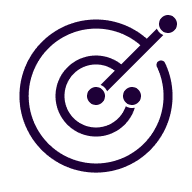Mastering global skills management with a data-driven approach. Procter & Gamble's journey with Valamis
Striking the balance to align skills management with business objectives.

Procter & Gamble (P&G), renowned for its strategic, data-driven approach to business, is on a transformative journey to refine skills management within its organization. Francesco Mantovani, P&G’s Global Learning Technologies and Innovation Leader, sees this journey as an embodiment of innovation and strategic implementation.
P&G focuses on linking skills management to organizational objectives
Through initiating initiated an internal survey, P&G sought to understand the challenges employees faced with learning and development (L&D) programs. The findings revealed three main challenges: finding time for learning, determining what to focus on, and locating the right materials.
This prompted P&G to align its skills management strategy with its overarching business goals, and think how best to grow a new and sustainable learning culture.
Transitioning from scattered data to a single, unified learning platform
Mantovani recognized the necessity of modern technology and a forward-thinking Learning Management System (LMS) to support them. They adopted a learner-centric approach, grounded in Design Thinking, and went about creating their feature-rich learning platform.
Their aim was to bridge the skill gap by focusing on improving confidence in applied skills, rather than just enhancing abilities.
P&G embraces AI tools to leverage technology and data for strategic alignment
With the introduction of AI, such as the CoursePT assistant by Valamis, P&G delivers personalized learning paths and interactive experiences to engage its workforce in their development journey. Manto emphasizes the transformative power of AI in providing personalized guidance to employees without the fear of judgment, ultimately boosting confidence in skill development.
However, P&G’s journey goes beyond just technology adoption and places huge importance on making learners an integral part of the process. By aligning individual aspirations with organizational goals, P&G has created a learning environment that supports both personal and professional growth.
Their approach not only caters to learner preferences but also addresses broader company challenges, leading to more focused and effective learning pathways.
P&G is an excellent example for organizations seeking excellence in skills management
As P&G continues to develop its L&D strategies, Mantovani’s guidance, based on over 25 years of experience at P&G, sheds light on the crucial integration of human resources and technology in improving skills management. P&G demonstrates the advantages of effective skills management across their organization through continuous learning and adaptation.
See it in action
Book a demo call now and let us help you connect the dots between learning and business success.
Book a demo now!


